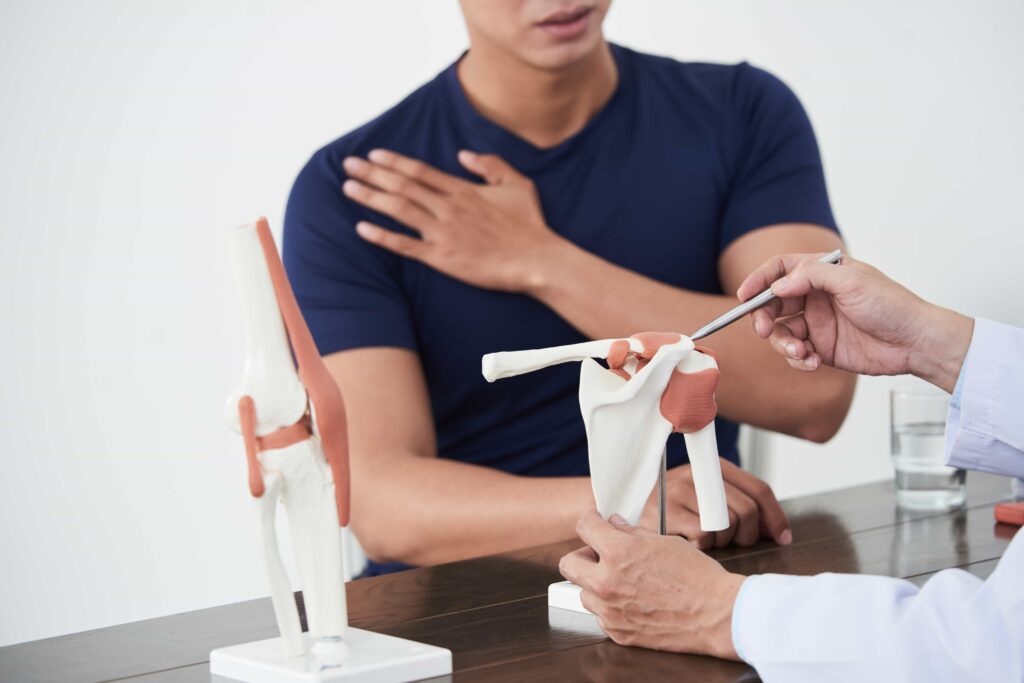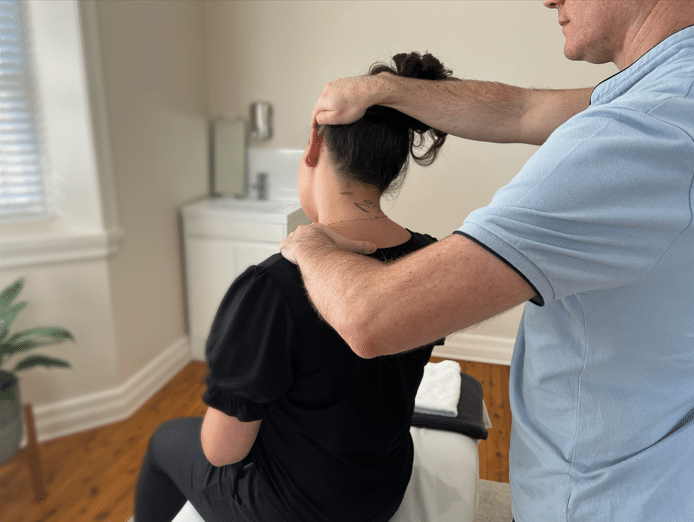- 02 9712 1736
- [email protected]
- 212 Great North Road, Five Dock, NSW 2046
- Open 7 days a week
Do you ever notice how your back feels after a long day of work? Perhaps there’s a subtle ache between your shoulder blades, or maybe your lower back feels stiff when you stand up. You’re not alone. In our increasingly digital world, maintaining spinal health has become more challenging than ever. The good news? Research has shown that proactive spinal care can make a significant difference in both short-term comfort and long-term health. Let’s explore five comprehensive, research-supported ways to keep your spine healthy in 2025.

Gone are the days when “sitting up straight” was considered enough. Contemporary research has revolutionized our understanding of spinal health, showing that varying your posture and moving frequently throughout the day is more beneficial than maintaining any single “perfect” position.
Think of your spine like a plant that needs regular movement to grow strong. Just as a plant moved by the wind develops a stronger stem, your spine benefits from regular, varied movement patterns. Research published in the Journal of Occupational Health suggests that people who change positions frequently throughout the day report less spinal discomfort and better overall mobility.

To incorporate more movement into your day, start by setting a reminder to change positions every 30-45 minutes. Take short walking breaks between tasks and perform gentle mobility exercises during natural work breaks. Using a sit-stand desk can help you alternate between positions naturally. Consider taking walking meetings for phone calls, and incorporate simple desk exercises like shoulder rolls and gentle twists throughout your day. The key is to make movement natural and intuitive rather than forced and regimented.
With remote and hybrid work continuing to dominate in 2025, creating an ergonomic workspace isn’t just a luxury – it’s a necessity. Poor workspace setup can place unnecessary stress on your spine, leading to discomfort and potential long-term issues.
The latest research in ergonomics emphasizes the importance of customizing your workspace to your body’s unique needs. For optimal screen position, your monitor should be at arm’s length with the top at or slightly below eye level, tilted slightly backward (10-20 degrees). Your chair should allow your feet to rest flat on the floor or be supported by a footrest, with knees at approximately 90 degrees and lumbar support aligned with your lower back curve. Position your keyboard and mouse so your shoulders can remain relaxed, with wrists neutral and not bent up or down.
Remember, even the perfect ergonomic setup needs to be complemented with regular movement. Consider using ergonomic accessories like keyboard trays, monitor arms, and adjustable chairs that can adapt to different positions throughout the day.

Think of your core as your body’s natural support garment. A strong core doesn’t just mean visible abs – it encompasses the entire cylinder of muscles that stabilize your spine, including your back, sides, and deep abdominal muscles.
Recent research in the Physical Therapy & Rehabilitation Science journal highlights the importance of a comprehensive approach to core strengthening. Start with foundation exercises like planks (front and side variations), bird dogs, dead bugs, bridges, and cat-cow movements. Progress gradually by increasing duration and complexity, adding movement variations to challenge stability, and incorporating functional movements that mirror daily activities.

Remember to focus on quality over quantity. Proper form during these exercises is crucial for developing effective core strength that translates to real-world benefits.

Sleep isn’t just rest – it’s an active recovery period for your spine. During sleep, your body repairs tissue, rehydrates spinal discs, and consolidates movement patterns learned during the day. The Spine Journal’s recent research emphasizes the critical relationship between sleep quality and spinal health.
When selecting a mattress, choose one that supports your spine’s natural curves and replace it every 7-10 years, considering firmness based on your sleeping position and body type. Use pillows that maintain neutral spine alignment – side sleepers should place a pillow between their knees, back sleepers might benefit from a small pillow under their knees, and stomach sleepers should use a thin pillow or none at all. Maintain a cool, dark room environment and consider using sleep tracking devices to monitor quality.
Professional spinal care has evolved significantly, becoming an integral part of proactive health maintenance rather than just acute pain management. Regular chiropractic and osteopathic care offers comprehensive support for spinal health through various evidence-based approaches.
These practitioners use soft tissue techniques to address muscle tension and fascial restrictions, while joint mobilization helps improve joint mobility and reduce joint stiffness. Through movement assessment, they can identify potential issues before they become problematic and provide personalized exercise recommendations to support long-term spinal health.

The benefits extend far beyond pain relief. Regular care can provide an opportunity for your body to relax and recover. Patients report improved joint mobility and function, enhanced nervous system function, better posture and body awareness, increased range of motion, improved sleep quality, reduced stress levels, and enhanced athletic performance.
Regular visits to a chiropractor or an osteopath also ensure you’re implementing the other four tips effectively. They can assess your movement patterns and posture, guide proper ergonomic setup, recommend specific exercises based on your needs, provide sleep position advice tailored to your body type, and detect potential issues early.
Taking care of your spine doesn’t require dramatic lifestyle changes, but it does benefit from a comprehensive, informed approach. By implementing these evidence-based tips and maintaining consistency, you can support your spinal health while navigating the demands of modern life. Remember, these tips work synergistically – each one enhances the benefits of the others.
While these guidelines provide a solid foundation for spinal health, remember that everyone’s body is unique. For residents of Sydney’s Inner West, Five Dock Osteopathic and Chiropractic Centre offers comprehensive spinal care services to help you maintain optimal spinal health. Our experienced practitioners can provide personalized guidance and treatment plans that incorporate all the principles we’ve discussed. Take the first step toward better spinal health by scheduling a consultation today.

Forest Lodge, Annandale, Glebe, Leichhardt, Balmain, Haberfield, Canada Bay, Rozelle, Rodd Point, Wareemba, Stanmore, Petersham, Lilyfield, Hunters Hill, Enfield, Cabarita, Mortlake, Rhodes, Burwood Heights, Birchgrove, Gladesville, Huntleys Point, Abbotsford, Ashfield, Croydon Park, Croydon, Chiswick, Russell Lea, Burwood, Strathfield, Concord, Drummoyne, North Strathfield, Liberty Grove, Dulwich Hill, Lewisham, Camperdown, Ashbury, Homebush, Homebush West, Woolwich, Henley, Summer Hill, Sydney Olympic Park

About
Five Dock Osteopathic & Chiropractic is located in Canada Bay, in Sydney’s Inner West. Servicing suburbs including Burwood, Croydon, Drummoyne, Five Dock, Haberfield, Concord, Abbotsford, Chiswick, Leichhardt, Wareemba, Russell Lea, Summer Hill, Strathfield.
Clinic hours
Monday, Tuesday, Thursday 7AM – 7PM
Wednesday, Friday 7AM – 6PM
Saturday 7AM – 2PM
Sunday 8AM – 2PM
Contact details